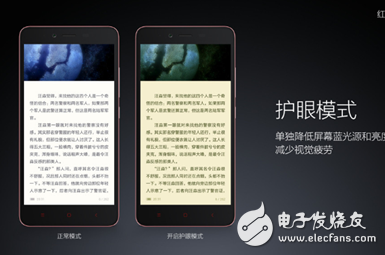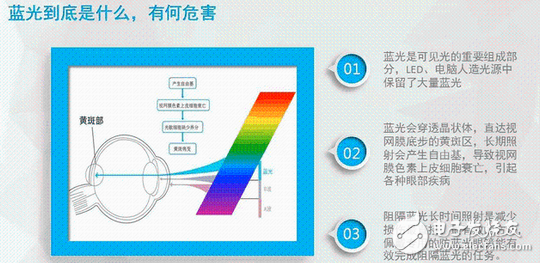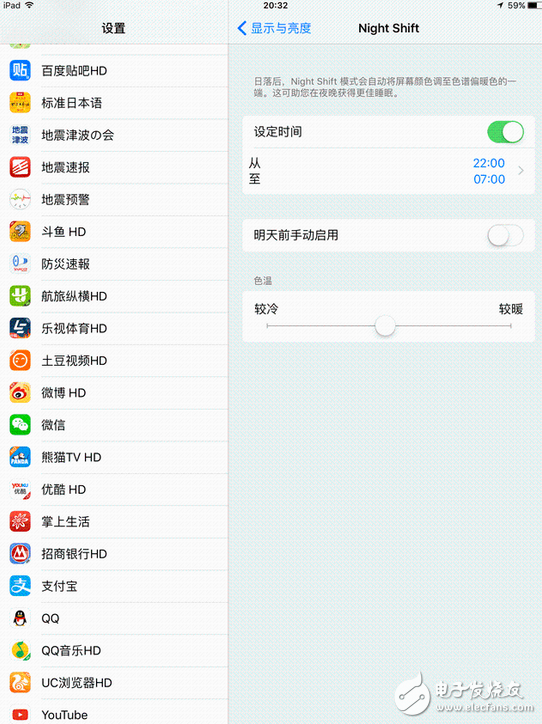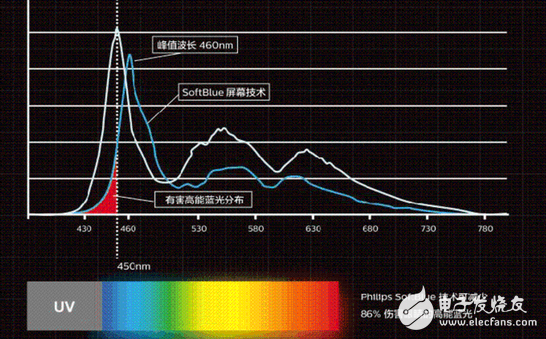Digital products have now completely penetrated into the daily lives of people, especially young people. If young people choose between "do not eat one day" and "do not touch mobile phones one day", I am afraid that more people will choose the former. However, while digital products bring convenience and pleasure to people, the side effects are also creeping away. Vision is naturally the first problem.

Do you feel that it is uncomfortable to stare at the screen of your phone for a long time? In fact, the culprit is the blue light emitted from the screen. In order to avoid this serious visual impairment factor, mobile phone and panel manufacturers have made a lot of efforts, and the eye protection mode that has been frequently seen on smartphones in the past year or two has emerged. So what is the principle of eye protection mode, is it useful for protecting eyesight?
There is data that modern people use their eyes for up to 16 hours a day, and about 8-10 hours of them stare at various screens such as mobile phones, tablets, laptops, monitors, and televisions. Among them, mobile phones, tablet computers and other devices are more serious to the eyes due to the closer distance from the eyes. How close is this distance? The data is said to be 30 cm on average, but I think that when people play mobile phones, the distance between the eyes and the screen is much smaller than this number.

Blue light is very harmful to the eyes
So where are the hazards of these screens? The culprit is the blue light they emit. The light released by the smartphone screen is mainly short-wave high-energy blue light at the end of the visible spectrum, and the high-energy blue light that is easily damaged is between 380-450 nm. Studies of the effects of retinal pigments have shown that cells that lose their activity at exposures in the 415-450 nm range are the range of light that we expose every day to the various screens. Beyond this, the probability of people suffering from macular degeneration will increase greatly.
If the eyes are exposed to blue light for a long time, it will cause great damage to the retina. It will induce dry eye syndrome, eye fatigue, and circadian clock disorder, which may lead to macular degeneration, visual impairment and even blindness. On the other hand, blue light also interferes with the secretion of melatonin from the human body, making it difficult for people to sleep, and people are willing to play mobile phones when it is difficult to fall asleep, which creates a vicious circle.
Software and hardware to Blu-ray interpretation
In view of the huge harm of Blu-ray, mobile phone manufacturers and panel makers have been working to reduce the harm of blue light in the past year or two. At present, there are two main methods for going to the blue light: one is to dim the screen brightness or increase the yellow tone, and the other is to adjust the blue light wavelength of the LED backlight, which we will introduce below.
At this stage, the blue-light method adopted by most manufacturers is the first one, that is, the software goes to Blu-ray. With a specific software algorithm, the blue light emitted by the screen can be reduced. Since the existing LED display screen adopts RGB three-color pixels, when the blue light is reduced, the red and green spectrums will merge to a color that is close to yellow, which is why the software goes to the blue screen to appear yellow. the reason.

iOS 9.3 joins the Night Shift feature
The representative of this means is Xiaomi and Apple. Xiaomi has added eye protection mode to MIUI 7, which supports user customization. Users can choose the range of eye protection mode, which is limited to reading applications or global applications. Later, iOS 9.3 also added a mode called Night Shift, which not only adjusts the color temperature but also customizes the opening time of the eye protection function.
However, this software has the drawbacks of going to Blu-ray. First, it can only remove about 30% of blue light, and has limited protection for vision. Secondly, the color temperature of the screen is too high, resulting in yellowish color, and many manufacturers are here. In one mode, the screen is darkened, and the superposition of the two causes the user's reading experience in the eye protection mode to be seriously degraded.
Another method of going to the blue light is more inclined to adjust the hardware. By fine-tuning the LED backlight, the peak wavelength of the blue light is changed from 450 nm to 460 nm, thereby greatly reducing the damage of the blue light to the eyes. This method is more thorough, can filter out about 85% of the blue light and the screen display effect will not be yellow, but it is more difficult to popularize because of the higher cost.

Filter most of the blue light by hardware
As a health-protecting and more effective function, there are not many mobile phone products that support eye protection mode, but it is believed that it will become the mainstream configuration of new machines in 2016. Of course, although both hardware and software can filter part of the blue light, at this stage, there is no technology that can completely filter the blue light. Therefore, the damage to the vision caused by playing the mobile phone for a long time cannot be ignored. Even if the mobile phone you use supports eye protection mode, I recommend that you try to avoid using the mobile phone for a long time at night. If you want to use it, you must turn on the eye protection mode even if the screen is yellow and some brightness is darker.
Opportunities: Growing outdoor and camping activities are likely to increase the use of portable power stations
There is a rise in recreational and camping activities, such as fishing and hiking, mainly in North America. According to the North American Camping Report of 2019, there has been an addition of 7 million new camper households in the US, and the percentage of people camping has increased by 72% since 2014. In addition, to the increase in new campers, more Gen X campers (38%) and millennials (32%) have begun identifying themselves as campers and frequently go camping. According to Tourism Research Australia, in 2019, total tourism, which included domestic and international tours, accounted for USD 152 billion. In Australia, people visiting hotels, motels, and resorts accounted for 24%, and people going for caravanning and camping accounted for 14%. According to Eurostat, two-thirds of European campsites are located in 5 countries, namely the UK, France, Germany, Italy, and the Netherlands. In 2017, camping visitors spent a total of 397 million nights across EU campsites.
With the growing need to stay connected and millennials opting for camping, there is a demand for various electronic equipment such as laptops, smartphones, rechargeable trekking head torches, camping lamps, fridges, and cooler backpacks. All these devices need the power to keep them working, which increases the opportunities to use portable power stations.
Solar Power Storage,Best Batteries For Solar Power Storage,Battery Storage System,Solar Battery Storage System
Shenzhen Zhifu New Energy Co., Ltd. , https://www.sunbeambattery.com